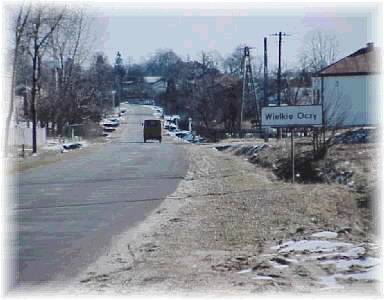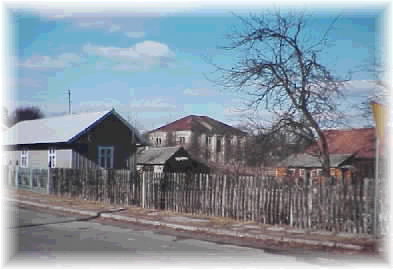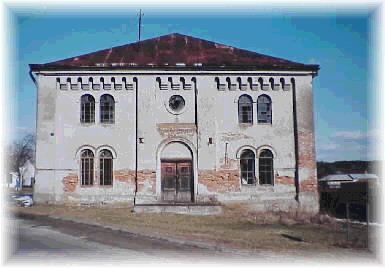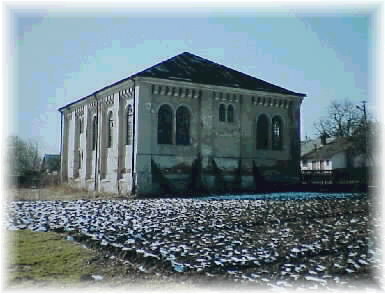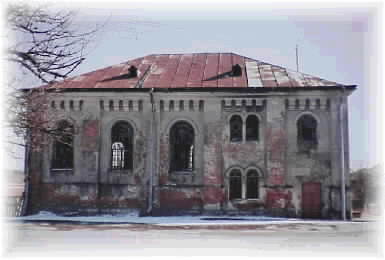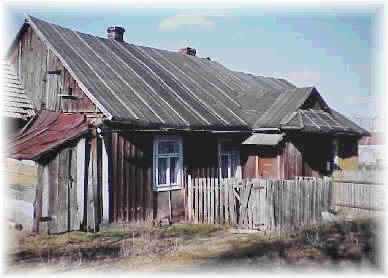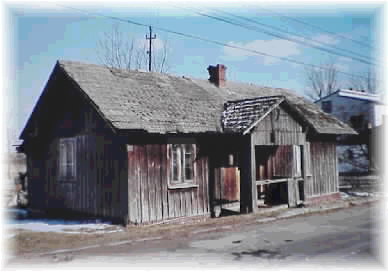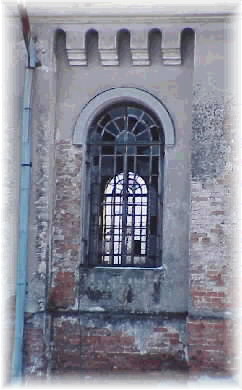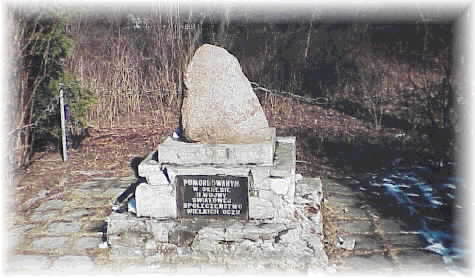|
Wielkie Oczy Photoshow Tour of the Synagogue Family lore has it that the immigrant generation came to the United States from a small town in the Austria-Hungary crown land of Galicia called Wielkie Oczy (Polish) or Vilkutch (Yiddish). At the end of the nineteenth century Wielkie Oczy was administratively in the sub-district of Javorov not far from the then Galician capital of Lvov (Polish: Lwow; German/Yiddish: Lemberg). Lvov is now known as Lviv and is the capital of the Lvov region in the Western Ukraine. In 1999, with the reorganization of the provincial boundaries in Poland, Wielkie Oczy fell within Lubaczów district and Podkarpackie province (meaning Sub-Carpathian), at the geographical coordinates of 50° 1’/23° 09’. A Brief History
Wielkie Oczy was founded as a private town in 1671 under the Magdeburg Law, with the right to hold three yearly market days and one market day each week. To protect the town from enemy intrusions the sponsor-owner erected a stronghold next to it. It is apparent that the Jews were among the first, if not the chief settlers, of the town.
By the middle of the 18 century Wielkie Oczy was already considered an important Jewish community and its Rabbi, Mordechai, son of Shmuel from Kutno, became widely known as the author of the treatise The King’s Gate. In time, when Galician Jews were allowed to acquire land, several individual families purchased holdings and became farmers. The census of 1928 accounts for seven Jewish farming families, tilling a total of 600 Galician acres and tenanting an additional 220 acres. Their livestock consisted of nine horses and 38 head of cattle. The majority of the Vilkutcher Jews made an arduous living as small merchants, peddlers and conveyors of goods on horse-drawn wagons. When, toward the end of the 19th century the New World opened up for immigration, the more daring and more desperate Vilkutchers ventured overseas, and once there did not forget the native town. One of them, a certain Eliahu Gottfried, did well in the United States and in the 1920s was in the habit of revisiting his birthplace, helping his landsmen with a generous hand. In 1927, chiefly by his financial contribution, the Vilkutchers rebuilt their community synagogue, which had been destroyed during the First World War.
Among the noteworthy rabbis who served the Vilkatch community in the past hundred years was Rabbi Yacov Teomin, son of Rabbi Ephraim, who was widely respected during the 1860s and who later became the rabbi of Tarnogrod and finally of Kolomyja. Toward the end of the 19th century Vilkatch took great pride in its Rabbi Naftali-Herz, son of Rabbi Moshe Teomin of Delatyn, who was followed by his son Rabbi Yona Teomin, the last rabbi of Vilkutch. The Zionist Organization of Vilkutch was established around the year 1925. The general elections to the Zionist Congress indicated that the local people, if at all Zionist, preferred the religious Mizrachi movement with a few modern individuals proclaiming allegiance to the General Zionists or the leftist United Zionists.
Relations between the Vilkutcher Jews and the surrounding Ukrainian population, at least throughout the 20th century, had been tense and extremely circumspect. Occasionally, it produced pogrom-like violence. Thus, for instance, when a fire broke out in 1866 destroying 15 Jewish houses, Gentile neighbors lustily engaged in general plunder of Jewish property. In 1910, peasants incited by their Ukrainian priest came out en masse, maiming a number of Jewish residents and destroying Jewish property. Only the timely intervention by the Galician police, who had great difficulty in restoring order, brought an uneasy standstill between Jew and Gentile. With the outbreak of World War II many refugees from Western Poland flocked into Vilkutch, swelling its Jewish population to some 700 souls. During the short-lived Soviet occupation of the town (1939-1941) a number of Jews found employment in municipal agencies and some alert individuals and groups succeeded in reaching the Soviet hinterland, particularly in the very early days of the war after the Germans had overrun Poland in September, 1939.
Later, when the Germans invaded the Soviet Union in June, 1941 they immediately entered Vilkutch. As if on signal, the Ukrainian population attacked their Jewish neighbors. This time, the pogrom—once begun—never stopped and was accompanied as usual by wanton destruction, plunder, individual and group slaughter, and forced labor. For a time the reduction of the Jewish population was balanced by the deportation of all village Jews to Vilkutch. This included the Jews from the rural settlement of Kobylnica in the spring and fall of 1941. In the winter of 1941, a large number of Vilkutcher Jews was dispatched to Jawórow (Yavorov). By the end of 1942 the Germans and the police of their Ukrainian supporters assembled the entire Jewish population, young and old, on the town square and carried out the "final selection", marching off some victims to Jaworow and others to the Janowska (Yanov) camp on the outskirts of Lvov. The last remaining Jews of Vilkutch were marched off in November, 1942 to Krakowiec and from there to Liavorov, where they shared the lot of the inhabitants of that town. After this, Vilkutch was declared Judenrein, free of Jews.
This brief history of Wielkie Oczy is based on a translation from the original Hebrew as published in the Pinkas Hakehillot (The Encyclopedia of Communities), Vol. 2, Eastern Galicia, Yad Vashem, Martyrs and Heroes Authority, Jerusalem, 1980.
The Jewish Cemetery in Wielkie Oczy The cemetery is located in the southern part of the village (hamlet). The town 26 is kilometers (about 42 miles) from Jaroslaw and 50 kilometers (80 miles) from Przemysl in Przemysl region. The present town population is somewhere between 1,000 and 5,000; currently there no Jews living in Wielkie Oczy.
The town was established in 1671. The earliest known Jewish community in town dates from 1765. The 1921 Jewish population was 487. The Jewish community was Orthodox. The cemetery location: urban, on flat land, and isolated with no sign or marker. The cemetery is reached by turning directly off a public road. Access is open to all. The cemetery has no wall, fence or gate, and is not protected as a monument. The pre- and post-WWII cemetery size is 0.79 square hectares. Somewhere between 1-20 gravestones are visible. Of these, many are not in their original locations, and more than 75% are broken or toppled. The existing stones, which date from the 19th and 20th centuries are either flat-shaped, finely smoothed, inscribed stones made of limestone, or are flat with carved relief decoration inscribed in Hebrew. There are no known mass graves. The present owner of the property is unknown. The cemetery property is now used only as a Jewish cemetery. The adjacent property is agricultural and residential. The cemetery is visited occasionally by local residents. It has not been vandalized in the last ten years. There is no routine care or maintenance. Within the limits of the cemetery there are no structures. Vandalism, weather erosion, and security are moderate threats. This description of the Jewish cemetery at Wielkie Oczy is a summary taken from a survey conducted jointly by the Association of Jewish Genealogical Societies and the United States Commission for the Preservation of America's Heritage Abroad to document the condition of Jewish cemeteries world wide. The survey covering Wielkie Oczy was completed using the documentation of the Citizen's Committee for the Protection of Jewish Cemeteries in Poland. There was no site visit. The survey is in conflict with other information obtained during March, 1997 to the effect that the Jewish cemetery no longer exists as a cemetery, that there are no visible gravestones and that there is a memorial plaque on the site (see above) dedicated, as it states, by the community of Wielkie Oczy. Photographs by Tomasz Wisniewski |
